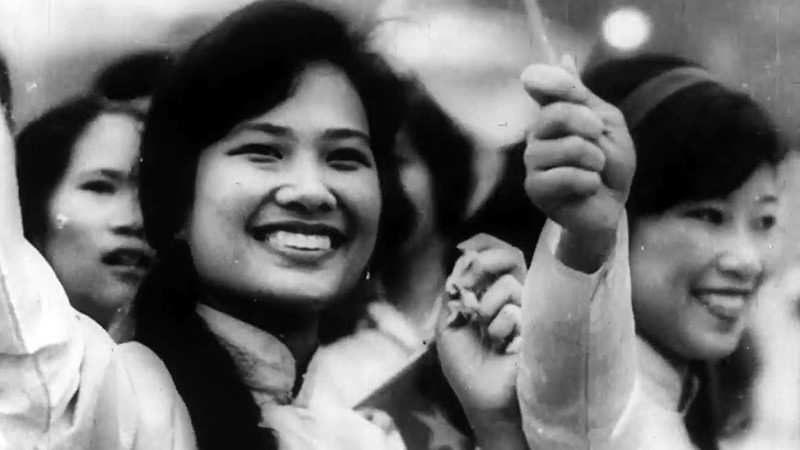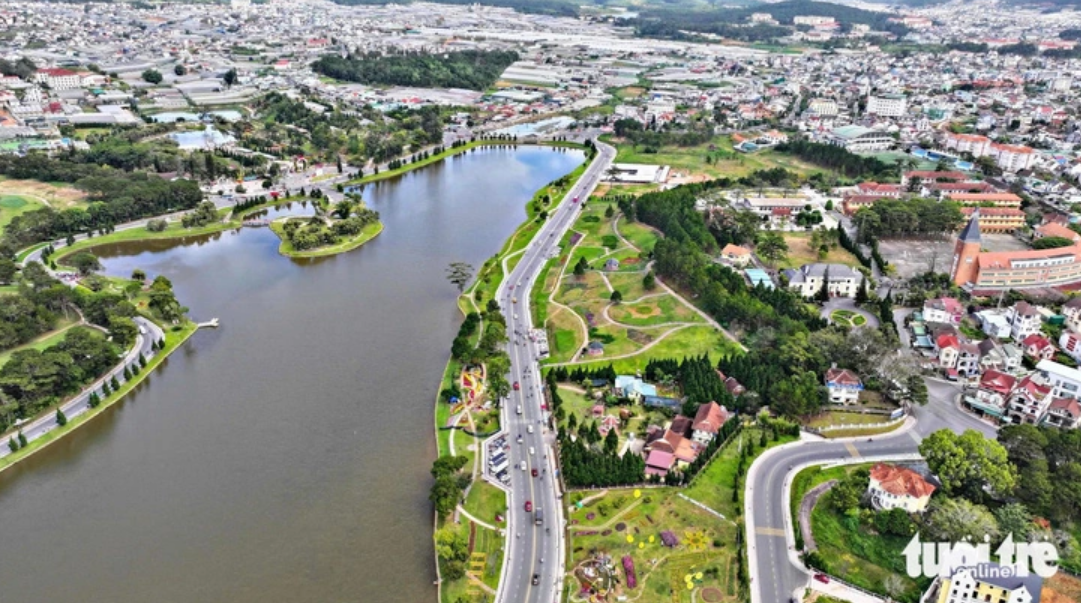Writer Ha Dinh Can, the developer of the film’s script, granted an interview with Nhan Dan’s Monthly publication, recalling his special memories during the process of the massive documentary project.
90 ideas
Q: You said that despite participating in many filming projects with different roles, you tried your best as you explored and created for the first time. When you took the role of developing the script outline of the most comprehensive documentary film in Vietnam television industry, what did you anticipate?
A: I have made outlines, wrote scripts and remarks and took on the role of director for hundreds of films launched by the People’s Army Film Studio and many central and local television stations. However, when I started working on the outline of the film “Vietnam in the Ho Chi Minh Era – A Televisiual Annal”, I realised that I had to prepare and process a huge volume of documents featuring milestones from before the Communist Party of Vietnam was formed until now. Therefore, my choices were not easy. For example, with the Dien Bien Phu Victory in 1954, there are many documents talking about our side, the enemy and the world. However, under the plan, only two episodes were allowed to recall the event. Therefore, I had to select general and new images highlighting the victory in a short and relatively complete manner in only two episodes.
When referring to the CPV’s leadership in the comprehensive renewal cause of the country, we had to calculate carefully in order to convey the issues in an appropriate manner, from the first breakthrough with the sixth Resolution of the fourth Party Central Committee (PCC) creating the opening to save the economy and improve the people’s lives to the second one with the eighth Resolution of the fifth PCC definitively eliminating the concentration system based on bureaucracy and subsidies as well as implementing the one-price mechanism, removing the regime of providing artifacts at low prices, and converting all production and business activities into a socialist business accounting model. The third breakthrough affirmed three economic views: taking agriculture as the leading front in the arrangement of the economic structure; determining a multi-component economic structure; and decisively eliminating the canal planning of bureaucracy and subsidies with a price policy in line with the law of value and towards the implementation of a one-price mechanism. These issues needed to be illustrated appropriately in each episode. The most difficult problem for a script creator was how to seek ideas for each episode. Ninety episodes are 90 ideas on the Party’s leadership in the Ho Chi Minh era. The ideas are the backbone of the film. Having determined the above, I began to work.
Q: Before this project, a number of television and cinematographic works on the same topic have left profound impressions on the public. How did you and other members of the film crew make your film different?
A: Thousands of documentaries on the Party, the resistance wars and the cause of national construction have been made. Dozens of films, which recalled the country’s major events such as the August Revolution, the National Day (September 2, 1945), Dien Bien Phu Victory, Ho Chi Minh Trail and the Great Spring Victory 1975 for national reunification, were successful and much appreciated by audiences. Making the film “Vietnam in the Ho Chi Minh Era – A Televisual Annal”, we were determined to make new creation based on the documents that had been used in many films before. In addition, the producers from Nhan Dan (People) Newspaper found many rare and new documents, including images on events that took place more than half a century ago. They are only featured on “Vietnam in Ho Chi Minh Era – A Televisual Annal”, creating new features for the film.
Writer Ha Dinh Can
Inspiration and emotion
Q: Can you share with us the parts that impressed you most in the 90 episodes looking back on the journeys with the many upheavals and ups and downs in the country’s history?
A: I am most impressed with two periods during the 90 years of the CPV’s formation and developments, including the early time when the fledgling state of Vietnam was born in late 1945 and the period when the Party renewed its thinking on the socio-economic development of the country. In 1945, the newly-formed Democratic Republic of Vietnam faced numerous challenges such as hunger, illiteracy and foreign aggressors. It could be said that with only a slight error or one wrong step, the country could have returned to slavery. However, thanks to the wise leadership of the Party and Uncle Ho, our nation overcame many challenges to not only protect its independence but also gain successes during the two resistance wars.
I was also impressed by the renewal of the CPV’s thinking of socio-economic development in Vietnam. The Party took the people’s happiness and prosperity as their main target so the renewal process has been promoted through many Party Congresses. Indeed, I was especially inspired and touched when writing the scripts for these episodes.
Q: As a soldier during the resistance war, could you share your feelings about the historical milestone in 1975?
A: 45 years ago, I was a reporter from the People’s Army Newspaper at the front, following the soldiers since the Ho Chi Minh Campaign began until it ended.
The first morning after liberation day, I walked on the streets to breath the new atmosphere in Saigon. The traffic signal in the intersection of Hai Ba Trung and Thong Nhat Streets was broken and a group of students went out in the middle of the street to control the traffic. Each student held a cardboard with the word “Stop”. All people, soldiers and military vehicles queued up behind me to follow the students’ control. Saigon City was in order right on the first day. That was my idle day. I had the free time to leisurely walking along Thong Nhat Street, from the City Radio and Television, through the US Embassy, to Doc Lap (Independence) Palace.
Just one day earlier, all the people from around the City had flocked to the street to rejoice and witness the liberation armed forces and tanks that had travelled thousands of kilometres to the end of the 20-year war. The national flag was planted on the Doc Lap Palace’s roof, opening a new period of national reunification. Since this glorious day, the city that was named after President Ho Chi Minh has developed constantly, becoming a major economic and cultural centre of the country.
Thank you very much for your interview!





